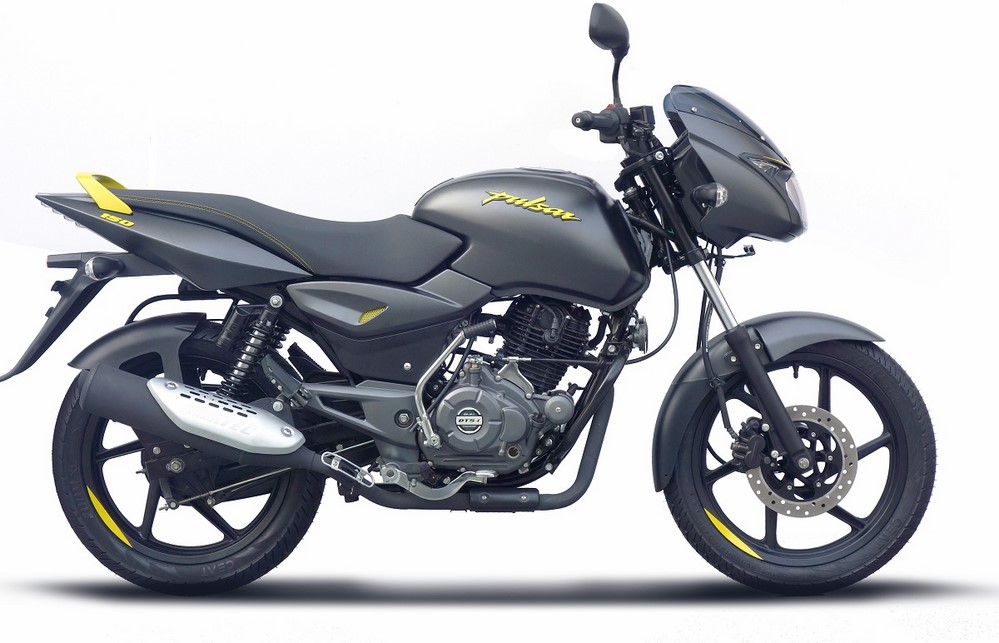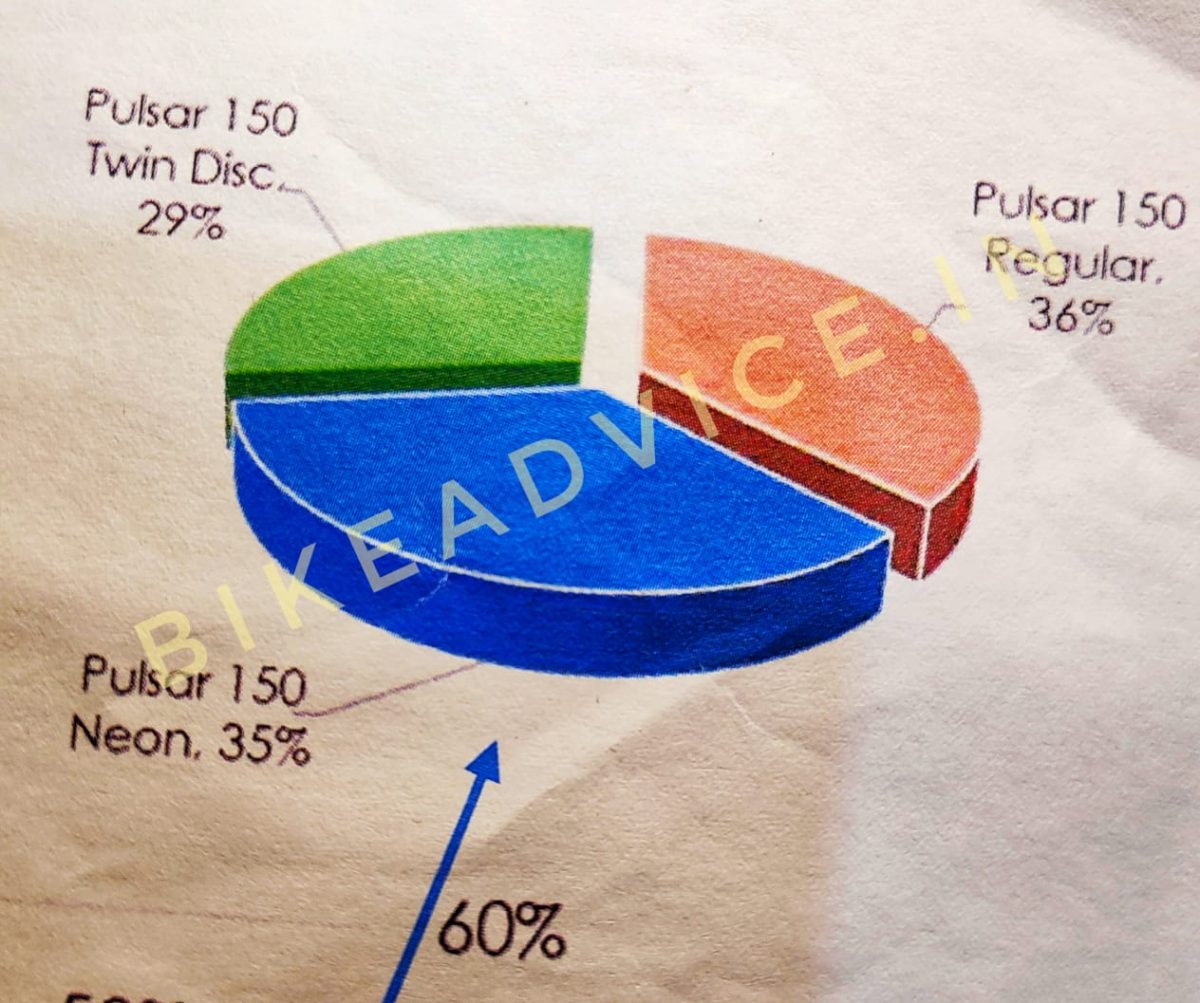Pulsar market share increased from 30 percent few quarters back to whopping 50+% within about 7-8 quarters. We discuss the strategy & numbers…
Bajaj has been the leader in this sports motorcycle segment which broadly includes 150 cc to 200 cc motorcycles priced roughly between Rs 70,000 to Rs 1-1.10 Lakh. Bajaj internally calls this segment as ‘S’1’ (we believe it means ‘Sports 1’) and it is worth about 1.80 Lakh units according to the company.
All the Pulsars are sold within this segment with the exclusion of Pulsar RS200 and the newest Pulsar 125. While the RS200 sits in the higher ‘S2’ segment, the Pulsar 125 has been introduced in what Bajaj calls the ‘M3’ segment which currently sells about 2.1 Lakh units.
Bajaj informs that few quarters back, it was getting hammered by the competition – so much so that its market share fell to as low as 30 percent in quarter 1 of 2017-18 financial year (April-June 2017). From the lower end it was getting very strong competition from Unicorn 150 and from the top end, motorcycles like FZ, Gixxer and Apaches were getting extremely aggressive.
It was during this time, the newer-gen Pulsar NS160 was introduced in the market (around June-July 2017). However, to form a 360 degree combat, Bajaj sat back and devised a strategy of rekindling its largest selling model – Pulsar 150. Around the fourth quarter of the same fiscal, Bajaj introduced the premium-most model in the Pulsar 150 range – the twin-disc (launched around March 2018) which carried lot of features from Pulsar 180. It was to take care of the onslaught from the premium motorcycles.
In the next quarter ie the first quarter of 2018-19, Bajaj launched the base version in the lineup called as Pulsar 150 Neon (introduced in May 2018). The strategy with this barebones version was to get in a model under the price of Unicorn 150 (which costed Rs 71,367 back then) – Pulsar 150 Neon was introduced at Rs 66,988 – all prices ex-showroom in Delhi.

This split of Pulsar 150 in three different variants – Neon, Standard and Twin Disc, was to offer essentially the same model with different features and at different price points. As a result, from 43,000 units of the S1 Pulsars in 2017, Bajaj’s market share rose to whopping 90,600 units, or 52 percent, in Quarter 4 of 2018-19 financial year (January-March 2019). Here is the sales growth chart…
Bajaj Pulsar Market Share: Growth
| Quarter | Sales (in units) | Market Share | Remarks |
| Q1 17-18 | 43,061 | 30% | |
| Q2 17-18 | 61,600 | 35% | |
| Q3 17-18 | 45,876 | 36% | |
| Q4 17-18 | 55,092 | 33% | Pulsar 150 Twin disc was launched in March 2018 |
| Q1 18-19 | 68,286 | 35% | Pulsar 150 Neon introduced in May 2018 at Rs 66,988 |
| Q2 18-19 | 72,707 | 38% | |
| Q3 18-19 | 71,145 | 44% | |
| Q4 18-19 | 90,643 | 52% |
This is not all – we exclusively have the market share of these three Pulsar 150 models during this quarter. Bajaj never shares respective numbers of different Pulsar models, leave variants of a particular model!
So, as on the 4th quarter of 18-19, here is the distribution of sales of Pulsar 150 variants..
- Pulsar 150 Neon – 35 percent
- Pulsar 150 regular – 36 percent
- Pulsar 150 Twin Disc – 29 percent

KTM-Bajaj: ‘High-End’ Electric Motorcycle Under Consideration
The sub-strategy, it appears, is to lure buyers into the showrooms with the very attractive price tag of the Neon edition. Once he walks in, show and try to upgrade him to the higher models, which offer more features and also look better. That the sales are not skewed towards the Neon edition is a clear indication that this strategy has worked brilliantly for Bajaj.
Bajaj Will NOT Drop Any Pulsar in BSVI Transition
With the market share back under control, Bajaj’s next target is to move over into the BSVI regime smoothly. Once that is done, we are informed that they will shift focus to the introduction of New-Gen Pulsar range.
Bajaj-Triumph to Make 400-800cc Motorcycles: New Update
A similar strategy was adopted for the expansion of the Pulsar 180 sales – details of which we have discussed here.

![Royal Enfield Guerrilla 450 Launch This Year [Speculation]](https://bikeadvice.in/wp-content/uploads/2022/12/Royal-Enfield-Hunter-450-pic-headlamp-100x70.jpg)
